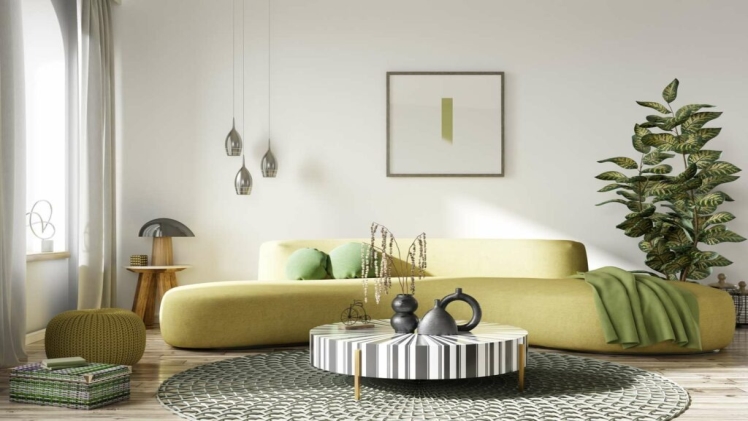As awareness of environmental issues grows, sustainable living has become more than just a trend—it’s a lifestyle choice. In 2024, eco-friendly home decor is at the forefront of this movement, blending style with sustainability. Here are some of the key trends that are shaping eco-friendly home decor this year.
-
Natural Materials
Trend: Natural materials such as bamboo, rattan, jute, and reclaimed wood are gaining momentum. These materials are sustainable and add a warm, earthy aesthetic to home interiors.
Why It’s Sustainable: Natural materials are typically biodegradable and renewable and have a lower environmental impact than synthetic materials. Reclaimed wood, for instance, reduces the demand for new timber and gives old materials a second life.
-
Upcycled and Recycled Furniture
Trend: Upcycling old furniture and using recycled materials will be significant in 2024. From repurposing vintage pieces to creating new furniture from recycled materials, this trend is about creativity and sustainability.
Why It’s Sustainable: Upcycling and recycling help reduce waste and the need for new resources. Giving old items a new lease on life contributes to a circular economy where products are reused and repurposed rather than discarded.
-
Eco-Friendly Paints and Finishes
Trend: Non-toxic, eco-friendly paints and finishes are becoming standard in home decor. These products are free from harmful chemicals and volatile organic compounds (VOCs), making them safer for the environment and your health.
Why It’s Sustainable: Traditional paints release VOCs into the air, contributing to indoor air pollution and environmental damage. Eco-friendly alternatives use natural ingredients and water-based formulations, reducing their environmental footprint.
-
Energy-Efficient Lighting
Trend: LED lighting, solar-powered lamps, and energy-efficient fixtures are functional and stylish. These lighting solutions are designed to minimize energy consumption without compromising on aesthetics.
Why It’s Sustainable: Energy-efficient lighting reduces electricity usage, lowering your carbon footprint and utility bills. LEDs, in particular, have a longer lifespan and are more efficient than traditional incandescent bulbs.
-
Sustainable Textiles
Trend: Organic cotton, hemp, linen, and recycled fabrics are taking centre stage in home textiles. These materials are used for everything from upholstery and curtains to bedding and rugs.
Why It’s Sustainable: Sustainable textiles are produced using environmentally friendly processes and materials. Organic cotton, for instance, is grown without harmful pesticides, while recycled fabrics reduce waste and the need for virgin resources.
-
Indoor Plants and Greenery
Trend: Bringing the outdoors inside with various indoor plants is a continuing trend. Plants enhance a space’s aesthetic appeal, improve air quality, and bring a sense of tranquility.
Why It’s Sustainable: Plants naturally purify the air, reducing indoor pollutants. They also create a connection to nature, promoting mental well-being and sustainability in home decor.
-
Minimalism and Decluttering
Trend: The minimalist approach focuses on simplicity, functionality, and decluttering. This trend encourages thoughtful consumption and creates functional and serene spaces.
Why It’s Sustainable: Minimalism promotes a reduction in consumption and waste. By focusing on quality over quantity, you can create a more sustainable living environment that is both practical and stylish.
-
Smart Home Technology
Trend: Integrating smart home technology to manage energy use efficiently is a growing trend. Smart thermostats, lighting systems, and appliances help optimize energy consumption and reduce waste.
Why It’s Sustainable: Smart home technology can significantly reduce energy usage by automating and optimizing home systems. This leads to lower energy bills and a reduced environmental impact.
-
Local and Artisanal Products
Trend: Supporting local artisans and craftsmen by incorporating handmade, locally sourced products into home decor is a meaningful trend. These unique pieces add character and support sustainable livelihoods.
Why It’s Sustainable: Local and artisanal products typically have a smaller carbon footprint than mass-produced goods. They often use traditional methods and sustainable materials, promoting eco-friendly practices and supporting local economies.
Conclusion
The eco-friendly home decor trends 2024 reflect a growing commitment to sustainability without sacrificing style. You can create a beautiful and sustainable living space by incorporating natural materials, upcycled furniture, eco-friendly paints, energy-efficient lighting, sustainable textiles, indoor plants, minimalism, smart home technology, and local products. These trends help protect the environment and contribute to a healthier, more harmonious home. Embrace these trends and make your home a beacon of sustainable living.

